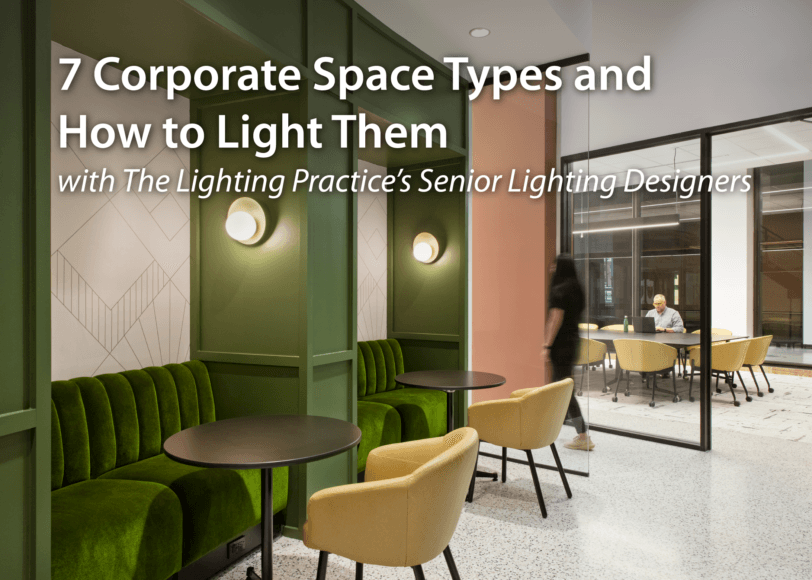“Third Places” signify the sanctuaries where individuals cultivate meaningful connections outside of their home, the first place, and their work, the second place. There has been a shift in third place design over the last decade as the drive for more community connection has developed. This is playing a pivotal role in nurturing healthy neighborhoods, promoting inclusivity, and enhancing overall health and well-being.
The Lighting Practice has observed the evolving industry trend of retail transitioning from indoor malls to open-air mixed-use retail and hospitality spaces over the last decade.
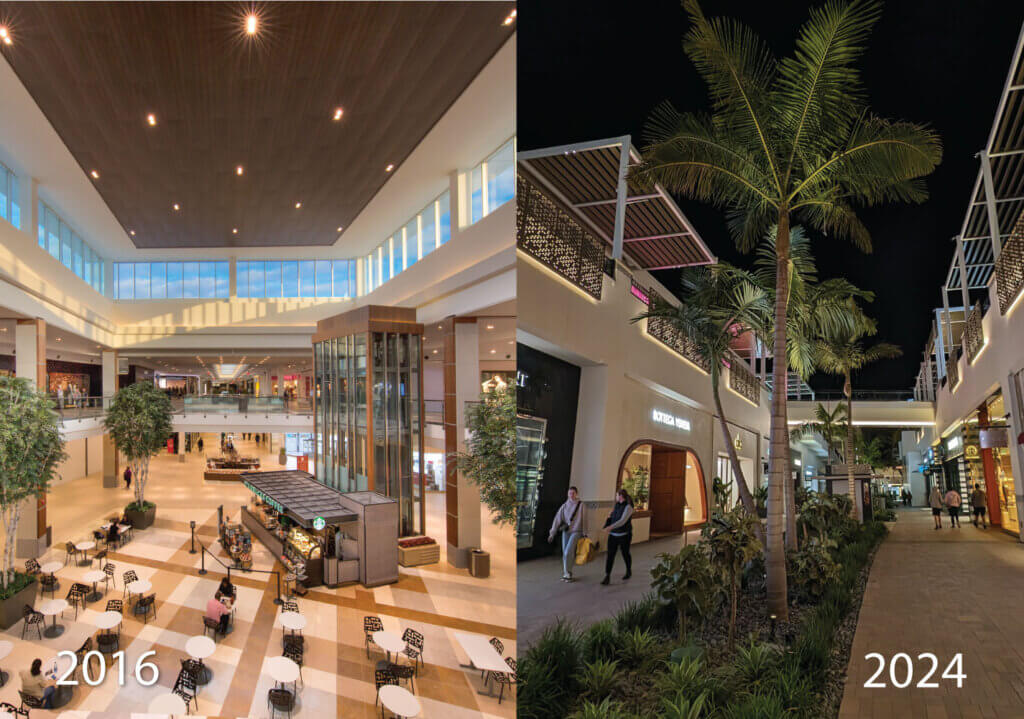
Springfield Town Center, Springfield, VA – Photo by Cheryl Stieffel, Miami in Focus: Fashion Valley Mall, San Diego, CA – Photo by Jered Widmer, The Lighting Practice
“Mall traffic reduced by an estimated 52% between 2010-2013, suggesting that the traditional shopping experience is no longer as popular as it once was” (NIH).
Unlike the traditional mall, open-air developments are going beyond shopping – evolving into multifaceted hubs that blend shopping, dining, entertainment, outdoor leisure, and green spaces. Open-air mixed-use centers deliver a more engaging experience, allowing them to become a “third place” for people – featuring live music, events, and curated oases to relax with fireplaces and games. These spaces are especially popular on the west coast and other temperate climates where weather allows shoppers to enjoy the amenities year-round.
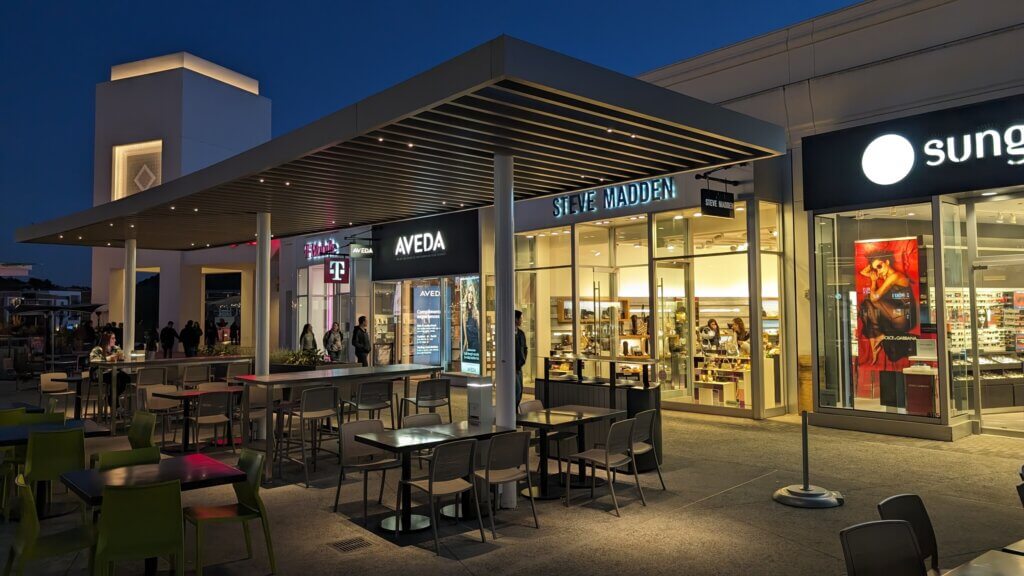
Fashion Valley Mall, San Diego, CA – Photo by Jered Widmer, The Lighting Practice
As consumer trends evolve, there is an increasing demand for more personalized experiences and stronger connections to the outdoors and local communities. Pre-existing malls have recognized this shift and begun to implement changes to meet these new consumer needs.
The recent revitalization of San Diego’s Fashion Valley Mall exemplifies this trend. Opened in 1969, this open-air shopping destination featured a heavily hardscaped environment that focused on connecting shoppers with the tenants. It had limited landscaping and few opportunities for community engagement. With its renovation in 2023, it has been transformed to incorporate more green space, additional entertainment options, and outdoor leisure areas – all crucial elements to third places.
As a prominent open-air shopping destination for Southern Californians, it demanded a nuanced approach to lighting. TLP has embraced the shift with more landscape and hospitality-like lighting techniques.
“The community inhabiting these spaces want to feel a sense of hospitality. Underlit spaces can pose risks for security and safety, while overlit spaces can feel uncomfortable and uninviting. Finding the perfect balance of light to support the comfort and safety of the community is key”, says Senior Lighting Designer Caitlin Bucari.
TLP took a minimalist lighting approach by focusing on low-output sources and integrated lighting within landscape and architecture to create interest and texture, while preserving the serene ambiance.
“Implementing layers of light defines the spaces and their functions, creating inviting environments that people want to inhabit”, explains Caitlin.
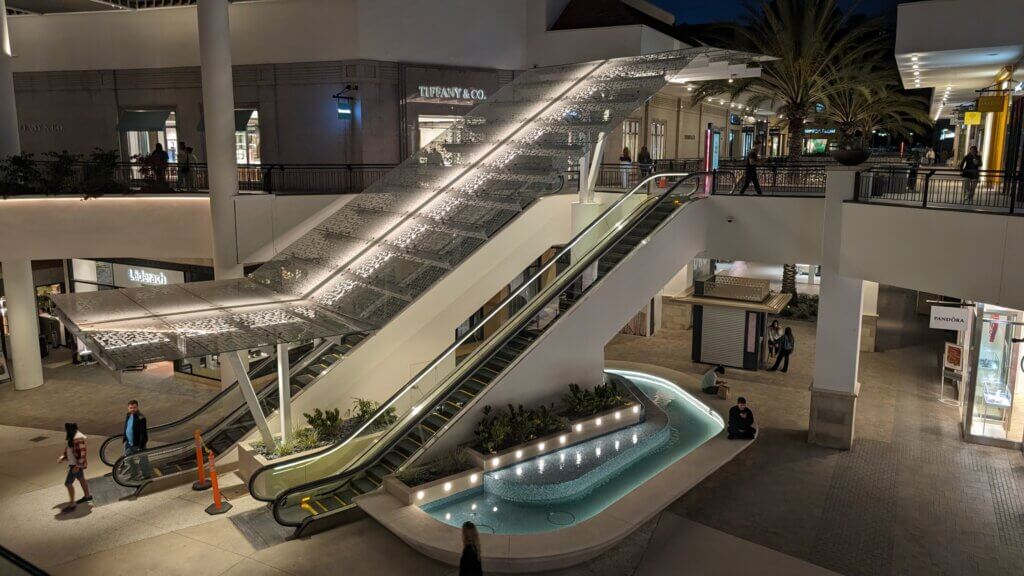
Fashion Valley Mall, San Diego, CA – Photo by Jered Widmer, The Lighting Practice
The Lighting Practice has collaborated on over 1,400 retail/mixed-use projects and has consistently embraced and adapted to the evolving trends in multipurpose developments. With those shifts in industry trends, TLP continues to innovate by developing new and unique lighting techniques to help define “Third Places” and the communities they support. Delivering curated, engaging, and impactful lighting solutions is a key element to transforming these oases for the enjoyment of community members after dark.
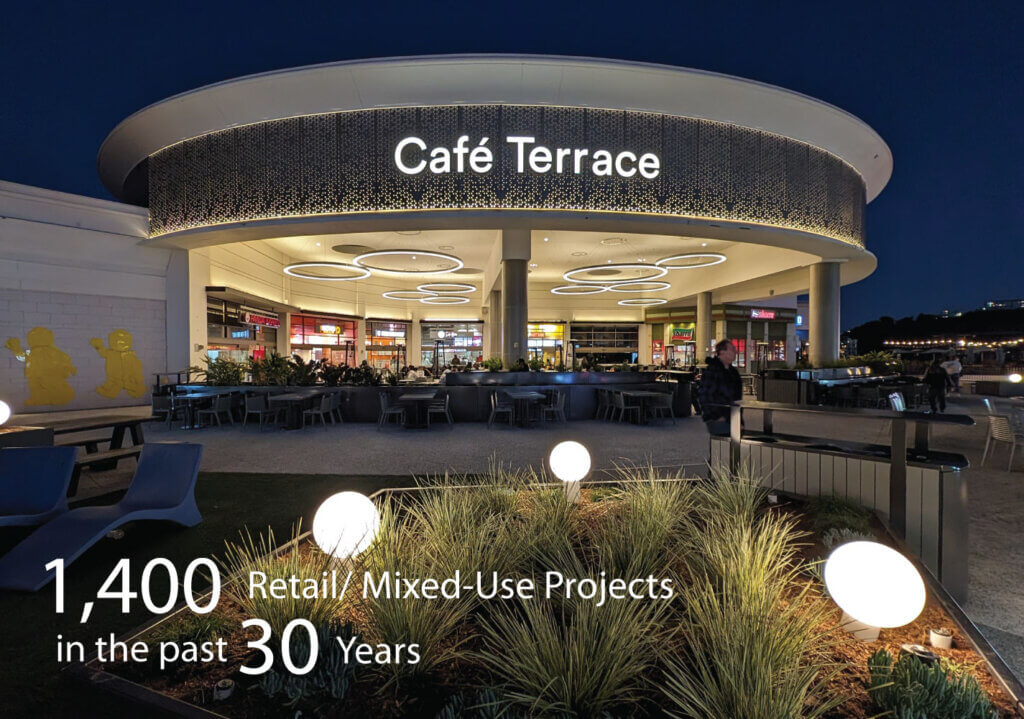
Fashion Valley Mall, San Diego, CA – Photo by Jered Widmer, The Lighting Practice
